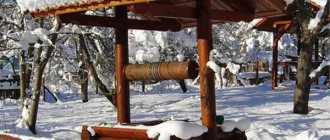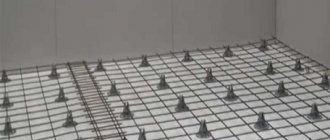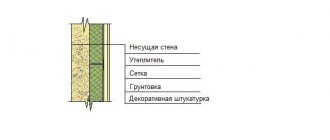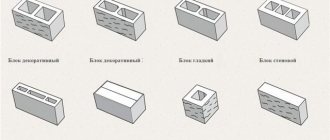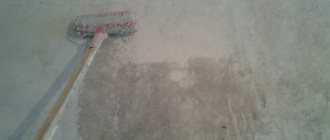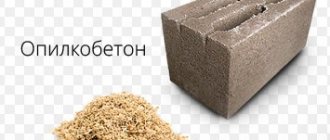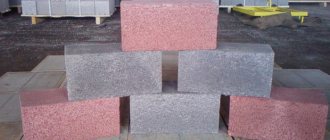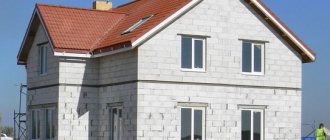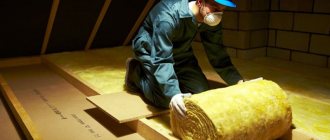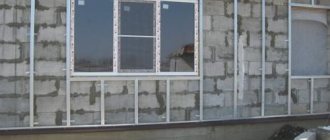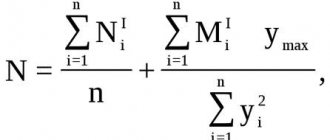Foam chips application
Foam chips are polymerized round balls with a diameter of 3 to 7 mm. Crushed foam (as this type of crumb is often called) is obtained by industrial crushing of industrial waste foam. Economically, this method is more effective, since thanks to this method of processing foam, it becomes cheaper as a primary material, and the original properties of the foam when crushed remain the same.
Application of foam chips:
Expanded polystyrene chips have found wide application in the industrial, construction and repair sectors. Crushed foam is mainly used as a building material and excellent insulation. Insulation with foam chips is considered the most economical and reliable method for thermal insulation of foundations, floors, walls or roofs. Let's consider the basic principles and methods of use:
- Filler: foam chips are used to fill holes and cavities in ceilings between walls, into brickwork or to level surfaces. Due to their technical characteristics, foam granules can take any shape, which avoids any cold bridges. High strength avoids deformation, unlike insulation materials such as expanded clay and mineral wool.
- Floor screed with foam chips: the process of preparing polystyrene concrete takes place in several stages. Initially, prepare the solution: take a small amount of water and cement, mix until a creamy consistency is obtained. The second stage: while continuing to mix the solution in a concrete mixer, add crushed foam. The ratio of the material depends on the expected result of thermal insulation. The higher the percentage of foam granules, the greater the thermal insulation properties of your screed. However, the following must be taken into account: if the material is distributed incorrectly, the density may decrease. For example, if you plan to use linoleum on the floor, the percentage of foam granules used should be less than when laying parquet.
If you yourself want to make a floor screed with foam chips at home, then to obtain the solution you must observe the following proportion (*builders’ recommendations):
- 4-5 buckets of expanded polystyrene crumbs
- 2 buckets of sand
- 1 bucket of cement
- 1 bucket of water
It is important to note that when working with expanded polystyrene crumbs, it is necessary to adhere to the standards of use and observe safety precautions: avoid open flames, do not use various chemical solutions.
Foam chips are an effective material for insulating concrete floors; they will last a very long time and will not lose their performance properties. Comfort and warmth guaranteed!
Int-Deco offers to buy foam chips in Kyiv or with delivery throughout Ukraine. Crushed polystyrene foam is packed in polyethylene bags of 0.33 m3 each.
What are the proportions of foam chips and cement?
It is better to insulate a wall with polystyrene foam on the residential side. In this case, it is necessary to leave a gap between the block and the wall.
Expanded polystyrene is secured with cement mortar or glue. When cladding a building with foam plastic on the outside, special dowels with a wide head are used as fasteners. All joints are filled with polyurethane foam. Then the surface is covered with a plastic mesh, onto which a plaster solution is applied. The façade is completed with brick, tile or simply painted.
Foam plastic is often used as insulation for floors and ceilings of multi-story buildings.
Construction and repair. Vladimir Kravchuk 3 How to make a solution with foam chips for concreting floors. Or rather, what proportions are needed 9 years old Olya Galenko There were a lot of experiments
The slabs are secured with an interfloor ceiling, having previously carried out waterproofing. The foam is poured with concrete on top. The floor becomes not only warm, but also protected from noise. In modern construction technologies, polystyrene foam blocks have proven themselves well as thermal insulation in buildings without basements.
Foam blocks for construction are used for vertical or horizontal protection of foundation blocks and floors from freezing. Communication network engineers are aware of the high thermal insulation properties. To avoid heat loss, gutters of heating mains have long been insulated with foam blocks or lines are assembled from pipes coated with polystyrene foam. The drainage channels of city roads are also insulated against freezing with this material.
Polystyrene foam is used in the production of refrigeration units, freezers, thermal vans and other types of industrial equipment. In them, the air in the cavities is simply replaced by foam, which significantly increases the thermal insulation characteristics, even when exposed to moisture. Their use requires lifting mechanisms, and therefore they are used in the construction of multi-apartment buildings.
When building a private house, you can use foam hollow blocks and panels. Polystyrene foam has low compressive strength, impact strength and resistance to surface mechanical influences. A protective layer must be applied on top of it. In specialized stores, foam blocks are sold for corner, end and wall blocks. They must be purchased separately.
The cost itself, of course, largely depends on the thickness of the outer layer (read: insulation), although if the order is wholesale, then the price can drop significantly. Below are the average prices of the most popular manufacturers. It is worth noting that people often encounter certain difficulties when constructing foam formwork. This is often related to:.
The described auxiliary structures made of polystyrene foam are used in the construction of monolithic reinforced concrete structures and foundations. Sometimes formwork is used as a decorative material, see. In addition, foam blocks with insulation are often used when finishing windows and constructing interior partitions.
And thanks to their excellent external properties, the modules can also be used for finishing office premises.
Foam chips for insulation
One of the most popular materials for insulation can be considered foam chips. The choice of consumers is justified, since this is a high-quality, environmentally friendly material that will help make the home warm and comfortable without significant damage to the family budget.
Foam chips properties and applications
Foam chips have a number of advantages compared to other thermal insulation materials.
Foam chips - what is it?
Foam chips or granules are bulk material, which is noted for its versatility and consists of foam balls with a diameter of approximately 5-6 mm.
Characteristics and properties of foam chips
Polystyrene foam granules have all the properties of a solid sheet, but unlike foam plastic boards, granules can take the shape of any container where they are placed. Expanded polystyrene granules have a number of features:
1 Almost does not conduct heat. Polystyrene foam is ten times higher than the thermal insulation of conventional concrete and almost ten times greater than that of ceramic brick.
2 Safe for people, does not contain toxic substances, does not cause allergic reactions, odorless, no organisms live in it.
3 Light weight. For comparison, 1 cubic meter of foam chips weighs about 15 kg, and plywood weighs about 500 kg.
4 Wear resistance. Data from laboratories that test expanded polystyrene will determine the durability of the material - approximately 80 years.
5 Very resistant to temperature changes and can withstand changes from -170 to +90.
6 Sound insulation due to the elasticity of granules and cellular structure, which reduce sound vibrations.
7 Ability to restore the original shape during deformation.
8 Ensuring air exchange of the surrounding space, i.e. Unlike ordinary polystyrene foam, granules are able to “breathe”. This prevents the greenhouse effect and mold formation in the future.
Foam chips are characterized by the following criteria
1 Density of the material from which the balls are made. The high density of the substance determines the increase in the mass and strength of the granule.
2 The diameter of the granules can be varied from 1 to 8 mm, setting the desired size when crushing.
3 Flammability. That is why this material is used in the inner layers of walls. To increase fire resistance, fire retardant is added to the foam. After this, the material becomes self-extinguishing.
Pros of foam chips
All materials have their advantages and disadvantages. Foam granules are no exception.
The following advantages can be highlighted in using foam chips:
Less weight of the final structure.
Saving on further finishing materials due to heat and sound insulation properties.
Simplicity in operation.
Disadvantages of using foam chips
The soft structure of the foam makes the screed made from such a solution not so wear-resistant.
The need to isolate from air due to its flammability. Foam concrete is capable of rapid destruction if it comes into contact with air.
Types of foam chips
There are two ways to obtain polystyrene foam granules and, accordingly, two types of them:
Primary processing, when special technology is used to foam polystyrene beads. This is an expensive process.
Crushing foam waste. This is secondary production, so it is more economical. The remaining foam is placed in special machines that crush the material until homogeneous. If necessary, you can set the desired ball diameter.
Cost of foam granules
The cost-effectiveness of foam chips as a quality material for insulation compared to others was noted. Depending on the characteristics of the foam granules and the method of their production, the price per cubic meter can vary significantly. The smaller the diameter of the granule, the higher its price. Foam chips obtained by crushing are much cheaper than those obtained by primary foaming.
Application of foam granules in various fields
Foam chips are used to insulate attics, walls, floors and floors.
1 Insulation of the attic. A room loses a significant percentage of heat through the roof. Polystyrene foam granules are an excellent option for attic insulation due to their low degree of moisture absorption and resistance to temperature changes.
2 Wall insulation. In addition to the main characteristics, foam chips take the shape of the container in which they are located, this is especially important when insulating a facade with shaped elements.
3 Insulation of interfloor ceilings. Sound insulation and the specific weight of the final structure are important when forming and insulating interfloor floors. Foam chips are also useful for floor insulation if there is a basement under the house that is not heated and additional insulation is required.
Brief summary
Consumer interest in foam granules is justified by its versatility and low price. Due to its unique properties, foam chips are in demand in many areas, from construction and furniture making, to the creative process of design and fishing.
The cost of foam granules depends on the technical characteristics of the granules themselves and the method of their production.
The use of concrete with foam chips, features of the technology and its advantages
Concrete is used everywhere in construction, however, this material has two significant disadvantages - heavy weight and high thermal conductivity. That is, when pouring floor screed, the load on the floor slabs increases significantly. And besides, the floors require additional insulation. There are several ways to solve these problems, and one of them is to use a mixture of concrete and foam chips.
Pros and cons of using foam chips
Any technology has its advantages and disadvantages, and this one is no exception. Pros of the mixture:
- concrete mixed with foam chips significantly lightens the final mass of the structure;
- the level of heat and sound insulation increases, therefore you can save on further finishing;
- simple technology for preparing the solution.
Minuses:
- polystyrene foam has a rather soft structure, so its service life is much shorter than that of concrete, that is, the total service life of such a screed will be about 20 years;
- foam concrete must be insulated from the penetration of moisture and air, otherwise it can quickly collapse.
Important! When using the mixture, you need to take into account the fact that when heated strongly, the foam chips will melt and release toxic fumes.
In addition, the overall strength of the concrete decreases. And in order to minimize all the negative aspects, you need to follow the technology and mix foam chips with concrete in the correct proportion.
Foam concrete
Features of use
Based on the specifics of the solution with polystyrene foam, its scope of use will be somewhat limited. Most often, this solution is used to fill floors in outbuildings.
Screeds and walls in residential premises require the use of pure concrete. The fact is that the surfaces will still undergo a fine finishing. The only possible option is pouring screeds on second floors with weak floors. However, there are other ways to reduce the pressure on the supporting structure.
Preparing the mixture
The main part of the solution is foam chips. It can be of two types:
- ready-to-use granules;
- crumbs can be obtained by crushing the foam in a special crusher.
Crushing polystyrene foam will be more profitable than buying ready-made granules. Moreover, you don’t have to use whole sheets - any leftovers will be used.
Ratio of components for preparing concrete:
- 1 part water;
- 1 part cement;
- 2 parts sand;
- 4 parts crumbs.
To prepare the solution, it is better not to skimp on the quality of cement and take the M500 brand. The fact is that the use of polystyrene foam in itself reduces the strength of the finished solution, so the cement must be of a higher grade than usual. In this case, polystyrene foam added to concrete will not reduce its strength so much.
Styrofoam
Pros and cons of manual crushing
As already written above, the base of foam concrete is crumbs, which you don’t have to buy in a store, since you can easily make it yourself. However, this approach has a number of disadvantages:
- higher material consumption compared to finished products;
- the strength of the finished concrete will be less. This is due to the fact that the solution will contain chopped granules and the percentage of water absorption will increase. In addition, granules of different sizes also affect this.
The advantages are that it turns out to be much more economical. And you can use any foam plastic.
Preparation of the solution
The kneading technology itself does not differ from the classical one. It is best to use a concrete mixer for mixing. And the sequence of work looks like this:
- Cement and sand are loaded into the tank;
- after this, foam granules are added;
- then the mixture is mixed well and water is added to it.
Now you just need to wait until the solution is well mixed and that’s it - it can be used for work.
Important! To neutralize the main disadvantage of foam concrete - low strength, you need to add special strengthening additives to the solution.
Finished granules
Other combination methods
Besides mixing cement mortar with concrete chips, there are other ways to combine concrete with foam. Moreover, when planning construction, it is worth paying attention to them.
Using ready-made sheets
Here you need to immediately make an important note - it is advisable to use extruded polystyrene foam. This material, although more expensive than foam, however, it significantly exceeds it in its performance characteristics:
- expanded polystyrene is denser;
- it has the best thermal and sound insulation performance;
- it is much more resistant to humidity.
Expanded polystyrene
A, in addition, due to its higher density, this material has a longer service life than foam plastic.
Technology of use:
- when floors are made, polystyrene foam sheets are used for rough flooring and laid on the base;
- concrete is poured directly onto the foam.
This approach has a number of advantages:
- the screed turns out to be thin, so its final weight is reduced;
- the floors are well insulated, in addition, they have a high level of sound insulation;
- The technology of work is very simple.
Another advantage of this method appears when installing heated floors. Due to the fact that polystyrene foam does not allow heat to pass through, their efficiency increases significantly.
In addition, you can insulate the walls with foam sheets. However, this method is best used only for exterior work with subsequent finishing. If you cover the walls with foam plastic from the inside of the room, you may encounter the problem of condensation.
Creation of permanent formwork
This is another option for combining these materials. The method is that the formwork for the construction of the building structure is constructed from polystyrene foam. And then everything is reinforced and filled with cement mortar.
Advantages of the method:
- strength - concrete poured with polystyrene foam turns out monolithic, which has a positive effect on the strength of buildings;
- ease of working with the material with your own hands - polystyrene foam is easy to process;
- speed – the amount of work is reduced.
In addition, the walls are well insulated. The only negative is that subsequent finishing of the facade is required.
Average score of ratings is more than 0
laminatepol.ru
Leveling the ceiling using “warm” plaster based on polystyrene foam chips
Leveling the ceiling by applying thick layers of plaster is not always justified: it will require attaching a reinforcing mesh, and if there is a significant difference in the ceiling level, the layer will not withstand it and will collapse. Adding polystyrene foam beads to the plaster will help you in this case, as well as when repairing walls, masonry in a well, joints of external panels of a house and internal floor slabs, attics, roofs and floors. When combining polystyrene foam balls with cement-sand or concrete mortar, the finished mixture perfectly retains heat indoors.
To work with the ceiling, we will need the same tools as for regular plastering and at least two plastic buckets.
After cleaning the ceiling from old layers, carefully prime the ceiling using a “fur” roller. The Betonokontakt primer is suitable for concrete slabs. Prepare complex and hard-to-reach areas of the ceiling several times with a brush.
The drying time of the primer is indicated on the packaging - different manufacturers have different times from 3 to 8 hours. Experienced craftsmen never adhere to recommendations for hardening, but try the surface by touch. If the ceiling is still damp, then you should wait, otherwise leveling the ceiling will be in vain - the further layer will collapse in a few weeks.
Polymer plaster mortar is prepared from Styrobond glue in a 1:1 ratio to M400 cement in a bucket. Mix everything with a drill and a mixing attachment until the mixture is homogeneous, gradually adding water until it becomes “sour cream” thick. If the mixture seems too thick, you can add a little water to it.
Now we add polystyrene foam, and you have 2 options: use ready-made crumbs, which are sold in construction stores by weight, or take a regular foam board and crumble it over a bucket. Fill a separate clean bucket 75% full, then add half of the glue solution you just prepared from the first bucket. The proportion of crumb solution will be somewhere around 1:2.5. Mix the mixture until all polystyrene foam granules turn dark.
If your screed (cement + sand) is too high, then it is better to avoid unnecessary overloading of the floor slabs and use a lighter material - expanded polystyrene concrete. Its composition is simple: cement not lower than M400, polystyrene foam balls and foaming agent “Saponified wood resin” (SDO). Leveling the ceiling with expanded polystyrene concrete makes the layer not only light and warm, but also not subject to shrinkage and cracks.
Table 1. Methods for manufacturing expanded polystyrene concrete
| Description | Advantages | Flaws |
| “Encapsulation” when it is necessary to reduce the density of the material. The granules are covered with cement glue, and the voids are not filled with sand. No special equipment and chemicals It is impossible to prepare such a mixture with additives! | Possibility of producing PS concrete with a density less than 200 kg/m3, using granules of the same size | The mixture delaminates when pressurized or transported, low bending strength (in case of a block) |
| “Porization” of the solution, which means replacing sand with air granules | Possibility of producing PS concrete whose density is less than 300 kg/m3, and changing this indicator in a wide range | It is quite difficult to obtain a stable characteristic due to the complexity of the technological process: bubbles are lost during installation, transportation or pressurization |
| Creation of PS concrete with a high-density structure that will not allow water to pass through even at a pressure of 2 MPa | All the advantages of method 2 + stability and preservation of its characteristics during transportation and spraying. Products are even formed from such PS concrete using a 3D vibrating press. | Special equipment is required |
Leveling the ceiling with plaster and polystyrene foam requires the presence of SDO in the form of a powder or solution, but if you don’t find it in your store, then you can do without it. A screed without SDO will not be as warm and light as with this additive, but it is better than a regular screed made of cement and sand.
We apply plaster to the prepared ceiling in two passes. The first stage is a layer of 1 bucket (thickness up to 3 mm), then immediately apply the mixture from 2 buckets. The ironing board is constantly wetted with water. Drying time is 3 days, after which we proceed to leveling the ceiling with gypsum putty from 1 to 5 layers. Each layer must dry well before applying the next (1-3 days).
Next, you will need a finishing putty, the hardening time of which is about 5 hours, after which it is ready for final sanding and subsequent painting.
How well the heat will be retained in the house largely depends on how well its foundation is made and insulated. A well-equipped foundation and the right material for floor insulation will reduce heat loss and help maintain a comfortable temperature in the room.
Floor screed with foam plastic
The issue of floor insulation is especially acute for residents of apartments on the lower floors, as well as private houses. Based on practical experience, we can say that in the case of creating a concrete screed, the most optimal solution would be to use polystyrene foam as a thermal insulation material. After all, it not only prevents heat loss, but also has a number of other advantages.
Proper insulation of the ceiling of a wooden house will prevent heat leakage
For owners of private houses, the topic of home insulation is relevant. The desire to save on heating bills prompts a number of measures to insulate the room. In an effort to create a favorable microclimate indoors, homeowners are replacing old windows with modern metal-plastic ones and insulating floor surfaces and walls. Having insulated the windows, walls, floor, why not work on the ceiling? After all, 25% of heat loss occurs through the ceiling.
Before starting work, you need to familiarize yourself with the technology
To avoid heat leakage through the ceiling, you should familiarize yourself with the technology of insulating the structure, select the appropriate material, taking into account the structural features, and calculate your own strength. There is nothing complicated about insulating the ceiling - you just need to follow the installation instructions and the result will please the diligent owner.
In the presence of a variety of building materials, insulation is carried out using two methods:
Both methods have a number of advantages and disadvantages.
Insulating the ceiling through the attic
It would be ideal to insulate the ceilings during the construction of the building, but this does not always happen. Therefore, it is necessary to know the insulation options in order to choose the right one. Insulating the ceiling of a wooden building from the outside is fast, simple and affordable. In the modern building materials market there is plenty to choose from:
Choosing the right material is the key to successful insulation
- Mineral wool is the most preferred material, which has excellent thermal insulation characteristics. The main disadvantage of glass wool is that it is susceptible to the destructive effects of moisture.
- Foam plastic is a polymer material that is lightweight, fireproof, and moisture resistant.
- Penoizol is a modern polymer material with an unlimited service life and a porous structure that provides excellent thermal insulation properties.
- Ecowool is created on the basis of cellulose and is environmentally safe, endowed with high thermal insulation qualities.
- Expanded clay is a granular, lightweight, fire-resistant material made from clay, endowed with excellent environmental characteristics, moisture-resistant and unattractive to rodents and pests.
- Sawdust, clay and even dry seaweed are also actively used by some owners to insulate the ceiling.
Having chosen a thermal insulation material that is suitable for price and quality, you can begin installing the structure necessary for fastening the material.
Mineral wool or polystyrene foam for thermal insulation
Securing mineral wool with a construction stapler
When choosing mineral wool and foam plastic for external use for ceilings of a wooden structure, which have excellent heat and sound insulation properties, you must:
- prepare a structure of slats into which the necessary material will be placed;
- lay a vapor-proof film on which mineral wool mats or foam layers are laid;
- The joints must be treated with polyurethane foam;
- then another layer of insulation is lined, which is covered on top with a waterproofing film, laid overlapping and secured with a construction stapler.
If the attic space will be used, then a screed should be installed on top of the insulating layer for the future floor in the attic space.
The use of bulk insulation materials for thermal insulation from the inside
To create a thermal insulation pad on the floor in the attic, various bulk insulation is often used:
A layer of thermal insulation made from bulk materials
- expanded clay and granulated slag;
- polystyrene and foam.
By forming air cavities, such insulation is distinguished by its ability to retain heat. A number of factors that characterize the strength of the roof, certain quality characteristics of the insulation and the thickness of the backfill layer help to decide on bulk insulation.
In order not to collapse the ceiling and to place minimal load on the supporting structure, a lightweight material is selected, and if the ceiling is reliable, it can easily withstand a layer of 20–30 cm of expanded clay and granulated slag.
Before laying the bulk material, a layer of vapor barrier film is laid, onto which a layer of insulation is poured with a thickness appropriate for the existing climatic conditions. Then it is covered with waterproofing foam.
Insulation with sawdust
If you want to save on thermal insulation, you can use dry sawdust to insulate the ceiling. A mixture of 20 buckets of large sawdust, a third of a bucket of cement and 25 liters of water is prepared. Having treated the wooden structure with an antibacterial mixture, you need to cover it with glassine, onto which a 20 cm layer of the prepared mixture is poured, compacted and dried.
Insulation of the ceiling from inside the room
The desire to insulate the ceiling from inside the room often coincides with the construction of suspended ceilings. Then the space created between the ceiling and the suspended structure is filled with material. Mineral insulation in the form of fiberglass or ecowool, presented in the form of mats or rolls, is popular among owners of private wooden houses.
Installation of drywall - the final stage of work
Sequence of work when insulating from the inside:
- Assembling a frame from a metal profile or wooden beam for fixing the sheets with which the structure will be sewn up (plasterboard, moisture-resistant plywood).
- Fastening the insulation into the interprofile space. Tile adhesive is used to firmly fix the layers of insulation.
- The thickness of the material should be selected before constructing the structure so that the layers do not have to be compacted, as this will reduce its thermal insulation properties.
- When installing insulation, you should provide space for lighting fixtures, but it is also possible to abandon recessed lamps, giving preference to chandeliers.
- The suspended ceiling is covered with plasterboard sheets.
Whatever method of insulation is chosen by the owner of a wooden house, it is necessary to strictly follow the instructions so that, even if minor errors are made in installing the thermal insulation layer, the heat is not lost from the house.
uteplenievdome.ru
Advantages of using polystyrene foam
Many experts consider foam plastic an ideal material for floor insulation. It is quite affordable and boasts many useful properties:
- high level of thermal insulation - polystyrene foam retains heat well, which is due to its structure consisting of round granules. There is an air cushion between them that prevents the leakage of warm air;
- excellent level of sound insulation - the foam layer in the floor screed will protect the neighbors below from various noises, primarily from the sounds of footsteps;
- fire resistance - this material is characterized by a short burning period and has the ability to self-extinguish. Even if during a strong fire the fire reaches the foam layer, no harmful compounds will be released when heated;
- long service life - foam plastic is not subject to shrinkage, rotting and can last for several decades without losing its characteristics.
Polystyrene foam is perfect for floor insulation
All these properties make this material an excellent solution for floor insulation. In addition to all of the above, it is easy to machine and is extremely simple to use.
Characteristics of foam plastic
| Brand of foam boards | PSB-S15 | PSB-S25 | PSB-S25F | PSB-S35 | PSB-S50 |
| Material density, kg/m3 | 10-11 | 15-16 | 16-17 | 25-27 | 35-37 |
| Compressive strength at 10% linear deformation, MPa, not less | 0,05 | 0,1 | 0,12 | 0,16 | 0,16 |
| Bending strength, MPa, not less | 0,07 | 0,18 | 0,2 | 0,25 | 0,3 |
| Thermal conductivity in dry condition at a temperature of 25 (+-5 degrees), W / (m * K), no more | 0,037 | 0,035 | 0,037 | 0,033 | 0,041 |
| Humidity of slabs, %, no more | 1 | 1 | 1 | 1 | 1 |
| Self-combustion time, sec, no more | 3 | 3 | 3 | 3 | 3 |
| Water absorption in 24 hours, %, no more | 1 | 1 | 1 | 1 | 1 |
| Service life, years (minimum-maximum) | 20-50 | 20-50 | 20-50 | 20-50 | 20-50 |
Necessary materials to create a screed
In the case when foam plastic or other heat insulators are used to insulate a concrete screed, it is called floating, since there is a layer between the base and the floor covering itself that does not allow the construction of a rigid structure.
To briefly describe the process of creating such a screed, a waterproofing material is laid on a leveled base to prevent moisture concentration. Then there is a foam layer, which is covered with a reinforcing frame and filled with cement-based mortar.
Before you begin, you should find out what tools and materials you will need.
Necessary tools for floor screed
Tools you should get:
- containers in which you can prepare a cement composition;
- a drill and a special mixing attachment;
- building level;
- trowel;
- spatula;
- rule.
You won't need a lot of materials:
- cement;
- sand;
- water;
- waterproofing agent;
- foam boards;
- mesh for reinforcement.
Polystyrene foam is available on the market in a wide range, but in any case remains an affordable material. When choosing slabs for screed, preference should be given to specimens no thicker than 5 cm. This thickness is quite enough for the resulting structure to cope with a load of up to 14 tons. For residential buildings, such characteristics are optimal, even taking into account that during operation, deformation of the foam up to 10% is possible.
Other methods
There are alternative ways to arrange a screed with insulation - using sheet heat insulation. Such a screed is called a floating screed due to the impossibility of making the structure rigid between the main surface and the floor covering.
Screed using foam sheets
The screed pie includes several layers that are laid on a pre-leveled base. The bottom one is a waterproofing material necessary to prevent moisture from collecting at the base. Then the foam is laid. Above the heat-insulating layer is a reinforcing frame, and on top is a cement mortar.
Floor screed with polystyrene foam insulation
Expanded polystyrene is a type of foam, but more dense and consisting of closed cells. They provide absolute moisture resistance. The improved characteristics of expanded polystyrene influenced the cost of the material, but not how to make a screed with it. The work process looks similar to that described above.
Most people can make a screed from polystyrene concrete. Lightweight but durable eco-friendly material increases sound insulation, retains heat in the house and lasts for many years.
Preparatory work before pouring the screed
If the base is concrete, then it is enough to clean it, and it will be ready for further actions. All existing cracks and irregularities are eliminated using tile adhesive.
Repairing cracks and leveling the floor with tile adhesive
When a concrete slab cannot boast of a perfectly even laying, differences can be leveled out using a layer of sand or foam granules.
Before laying waterproofing, the evenness of the base must be checked with a building level.
Checking the levelness of the floor
Creating a screed on a ground surface is a slightly more difficult task in terms of preparation. First of all, the base must be leveled and compacted properly. A gravel or crushed stone layer about 10 cm thick is laid on top of the soil and compacted well. Then comes exactly the same layer of sand.
To get a level floor, you need to make markings on the walls. First, notches are made in the corners of the room using a water level, and then, using a cord, the markings are turned into a solid line. The resulting mark will serve as a guide, helping to maintain the desired level of the future surface.
Marking walls using a water level and painting thread
When the base and markings are prepared, it is time to lay the waterproofing layer. The material that protects against moisture accumulation should be placed on the walls and end slightly above the level of the finished screed. If piece material is used for the waterproofing layer, then its individual elements are overlapped and secured together with tape.
The isolated base is filled with cement mortar on top. As a result, the layer thickness should be about 40 mm.
Foam layer and screed filling
The polystyrene foam is placed on the still wet rough screed; laying begins from the wall opposite the doorway. Arrange the insulation elements in a checkerboard pattern, securing them manually using rubbing movements. The seams are covered with construction tape, which prevents the penetration of the cement composition into the layer. Then work stops for several days until the heat-insulating layer dries completely.
Laying foam boards
Installation of foam plastic for flooring under screed
When the foam is securely fixed to the base, proceed to laying the reinforcing layer. As a rule, to create it, a metal mesh with cell dimensions of 10*10 cm is used. But it cannot be laid directly on polystyrene foam - this will lead to the loss of its functional purpose, which is to reduce the pressure on the insulation. Plastic supports are installed on the foam layer to hold the mesh suspended.
Reinforcing mesh laid
To ensure uniform distribution of the solution over the entire surface, beacons must be installed. They can be placed in any order, and the step between elements should not be greater than the length of the rule.
The cement mortar is prepared immediately before use; it covers the foam and mesh. When the reinforcing layer completely disappears under the cement mixture, it must be thoroughly compacted. Completion of work with the screed can be carried out in two ways:
- the floor is leveled along the beacons;
- lighthouses are equipped with profiles for gypsum boards, and alignment is already carried out using them.
In any case, the final cement layer should be approximately 8 cm thick. After 3 days, you can safely walk on the screed, and resumption of repair work is possible within a week after it is poured. However, the surface will acquire the necessary strength only after 28 days, when it is completely dry. At this time, the screed is periodically sprayed with water, preventing it from drying out, which will lead to the appearance of cracks.
In general, complaints about cracking of cement screed can be heard quite often. Such a nuisance appears as a consequence of a violation of process technology. Especially in case of refusal to cut shrinkage seams when working in large rooms. Seams are created 12 hours after the completion of pouring the cement layer.
The depth of the seams should be approximately one third of the thickness of the screed. A special tool is used to cut them.
After the surface has completely hardened, they begin laying the floor covering, which can be absolutely anything. When thermal insulation is carried out correctly, and there are no cracks in the walls and ceiling that release heat, the floor temperature will remain at room temperature.
| Flooring | Prices, rub/m2 |
| Linoleum | 100-700 |
| Polyvinyl chloride coatings | On average from 1000 |
| Cork covering | On average from 1600 |
| Laminate | 170-1250 |
| Tile | 300-1500 |
| Carpets | 70-2000 |
| Parquet | 1000-2600 |
| Self-leveling floors | On average from 800-1000 |
Introducing foam granules into the solution
Introducing foam granules into the solution
To create a concrete screed with foam plastic, slab material is not always used, because the surface can be given additional performance properties by introducing granules into the cement mortar. Foam granules will create an air layer, thereby ensuring good thermal insulation performance of the screed. This process is carried out in several stages.
Foam chips with cement
- A solution is prepared consisting of a small amount of water and the volume of cement required to obtain a mixture of creamy consistency. The mixing process becomes much faster and more efficient when using a drill with a suitable attachment.
- Continuing mixing, foam granules are added to the mixture. The ratio of ingredients varies: one part of concrete can contain three, four or even six parts of granular material.
The higher the percentage of granules in the solution, the better the thermal insulation properties of the screed. However, at the same time, it will be less durable, and when pressed it may even crumble, therefore, it will lose the lion’s share of its performance characteristics.
Foam chips are a material that solves the most pressing problems, being an ideal insulation material that is resistant to fires, severe fires and other types of damage, and at the same time economical and high quality
The choice of the desired proportion largely depends on how durable and rigid the finishing floor covering will be. For example, if you plan to use linoleum, then the volume of granules in the solution should be minimal, parquet - vice versa.
Video - Polystyrene foam granules. Mixing with cement
How to mix foam and cement mortar?
Screeding with cement mortar will entail a load on the covering slabs. This is very bad, so to significantly reduce it, you need to add foam chips to the cement mixture. An important aspect is to increase heat and sound insulation.
Before adding crumbs to cement, it must be treated with a special solution.
You can use something like this:
- crushed, obtained by grinding foam pieces;
- primary, specially produced for use in mortars.
The first type has a cheaper cost than the second.
What is the proportion of cement for foam chips for concrete mortar? It's quite simple:
- from 4 to 5 buckets of fine foam crumbs;
- 1 part of cement grade M 500;
- 2 parts coarse sand;
- 1 part water.
Use a concrete mixer to mix all components. This will take you no more than 5 minutes, and the result will be a slightly dry mixture, somewhat reminiscent of buckwheat in appearance.
Concrete with crumbs - negative aspects
As already mentioned, a mixture of mortar with light filler (foam chips) has a high level of sound insulation and thermal insulation. In addition, this material is not porous and does not absorb moisture.
But foam balls, interacting with cement mortar and sand, are not durable. The action of oxygen causes their destruction. They will completely collapse in about 20 years.
That is why concrete with the presence of foam chips must be plastered. In addition, such material as polystyrene foam is not absolutely harmless. Since foam balls, when combined with sand and cement, become non-flammable, when heated they simply melt and release toxic gas.
Instructions for preparing concrete with foam chips
First you need to load sand and cement into the concrete mixer. After this, add the crumbs. At this stage, you should mix the ingredients and only then add water. The proportions of foam chips with cement must be taken into account so that the mixture does not crumble later. After mixing all the components, add water and bring the solution to a homogeneous state.
The finished product will have the following characteristics that positively distinguish it from pure concrete:
- Reduced heat conductivity;
- Lightening the weight, with the ability to reduce the load on the foundation;
- Increased sound insulation;
- Significant cost reduction.
But, despite all the advantages, this product clearly lacks strength. In order for this indicator to be normal, it is necessary to maintain the ratio of foam crumbs and other components.
salecement.ru
Some advice from professionals
Despite the fact that creating a screed with foam plastic is not a very complicated process and even an amateur who carries out all the technological steps can cope with it, there are several nuances that need to be remembered:
- The optimal thickness of the foam used in screeding is considered to be 5 cm, but this rule applies to apartments located above the second floor. If the apartment is on the ground floor or we are talking about renovating a private house, then the material should be taken with a greater thickness, for example 10 cm;
- As a rule, the foam layer is located between the waterproofing material and the floor screed, that is, as if “under the cement.” However, sometimes it is laid on a screed under the finishing floor covering; this approach is possible when using wood as the last layer;
- When choosing a reinforcing mesh, you definitely shouldn’t save money, because it will serve as a frame that takes the main load on the floor and protects the heat-insulating layer from deformation.
Screed diagram with foam plastic
Taking into account the opinion of experts and following the stages of technology for arranging an insulated screed, you can make your home much more comfortable to live in. It is not for nothing that polystyrene foam is considered the optimal material for thermal insulation, because a 12 cm thick slab retains heat no worse than brickwork 2 meters thick. Foam boards are not afraid of high humidity, since they practically do not absorb water.
Foam insulation: pros and cons of materials
Polystyrene foam is a fairly common material that is used to insulate various objects - not only residential, but also technical. And each case has its own nuances of performing this procedure. Although in some cases this material cannot be used as a heat insulator if we are talking about a basement and a building with a ventilated facade. The reason lies in the characteristics of the foam. Therefore, before you begin insulation with this material, you should familiarize yourself with the physicochemical properties of polystyrene foam, which can also have a negative impact. What advantages and disadvantages does this material have?
Advantages of polystyrene foam
One of the thinnest insulation materials
If we compare polystyrene foam with all other insulation materials, what makes it unique is its low thermal conductivity coefficient, in which no one can surpass it. It follows from this that it will have a minimum thickness, unlike other materials. This fact is clearly confirmed by the list of known insulators indicating the value of their thermal conductivity:
- Penoizol (50 mm).
- Foam insulation (75 mm).
- Mineral wool (125 mm).
- Wood (340 mm).
- Brick wall (900 mm).
- Concrete (2132 mm).
The lightest insulation
Even when choosing polystyrene foam, you can find out how much the foam board weighs. Just look at the packaging, which contains information about the density of the material:
The density value that corresponds to one cube should be considered the mass of the product. This nuance will help you determine how high quality the material offered to you is. If the description of the foam indicates a density of 25 kg/m3, and weighing shows a different result, you can be sure that there is something wrong with this material.
You can carry out insulation work with any polystyrene foam, regardless of its density. The important point is that as it decreases, the strength of the material will deteriorate. It would not be the best decision to insulate the first floor of the building, since any mechanical impact will lead to damage to the facade. Therefore, you should choose a material that has the maximum density value.
One of the most inexpensive insulation materials
One of the most important advantages of polystyrene foam is its low cost. Today in construction the following types have become widespread:
- sheet foam;
- foam chips or balls.
Moreover, the cost of these materials is almost the same. It can be assumed that this was influenced by an increase in demand for balls, which are necessary during roof insulation. They are introduced into the cement-sand mixture, after which a layer of the required thickness is created on the ceiling. This option allows you not only to save money, but also to retain heat and provide the necessary strength.
Polystyrene foam is a very multifunctional insulation material.
Polystyrene foam has become widespread when performing work such as:
- wall insulation;
- roof insulation;
- floor insulation;
- insulation of the basement of the house.
Most often, polystyrene foam is used to insulate walls. The important thing is that, in addition to all other qualities, this material has a long service life, even when under a layer of plaster. If you believe the manufacturers, the facade, which is made on the basis of polystyrene foam boards, can survive without major repairs for 30 years.
There are rumors that if polystyrene foam was used to insulate a house in Germany, the owner can count on longer insurance than usual, which can reach 100 years.
Disadvantages of polystyrene foam
Confidence in the correct choice comes when the consumer is also familiar with the negative aspects of using polystyrene foam.
Foam plastic is a flammable material
Although descriptions of polystyrene foam may vary, be aware that it cannot withstand fire and will turn into a liquid mass if exposed to it for a long time. With this in mind, the owner should make every effort to keep the fire as far away from him as possible. Otherwise, it will be incredibly difficult to correct the situation.
For this reason, foam plastic is not suitable for finishing a ventilated facade. Here it will be provided with a constant flow of air, and there will also be empty space between the insulator and the surface of the facade, which will only contribute to good combustion.
Polystyrene foam releases hazardous substances
Over time, polystyrene foam begins to have a negative impact on the health of others due to the formation of a harmful compound - styrene monomer. When using several sheets of polystyrene foam in a room without ventilation, you can soon notice an unpleasant odor. Because of this, other materials should be chosen as an insulator for residential premises.
It is worth remembering this feature of polystyrene foam when insulating a bathhouse. This procedure must be carried out in such a way as to exclude the impact of high temperature on the foam, otherwise visiting it will not bring benefit, but great harm.
Polystyrene foam is hygroscopic
This quality means the ability to absorb moisture. Although opinions on this matter may vary, this feature is characteristic of polystyrene foam. For this reason, you should not use this material as an insulator when working in a damp, cold basement. It is advisable to abandon its use and replace it with extruded polystyrene foam. It demonstrates resistance to moisture absorption due to the presence of a different internal structure.
You can verify this by conducting the following experiment: take a piece of regular foam and extruded one and place both in water. After a while, check how much their humidity has changed. The first will become wet, which will add weight, while the other will retain its moisture content the same.
Polystyrene foam works as a vapor barrier
During the development of the project and construction of the facility, this feature of foam plastic should also be taken into account, due to which it will not be a good choice. First of all, its use is dangerous when building houses based only on polystyrene foam blocks.
While in a room, we fill it not only with air, but also with heated water vapor, which should not linger inside the room. As steam accumulates, it moves up and to the sides, looking for a way to escape to the street. This problem is solved by the ceiling and walls, which require the ability to “breathe”. If during the construction stage the thermal insulation was made using polystyrene foam, care should be taken to create high-quality forced ventilation. If you neglect this advice, then the windows will be covered with condensation all winter, and an increased level of humidity will be observed in the room itself.
Styrofoam is a good home for mice
Many owners have already seen this. For rodents, foam plastic can become a home for many years. After all, for this it has all the necessary properties: it retains heat perfectly, has a soft structure and provides reliable protection. You can prevent mice from infesting foam plastic if you do not give them the opportunity to make their home in this insulation. To do this, the material should be covered with mineral wool or metal inserts. If the smell of the first one repels rodents, then the second one will become an insurmountable barrier for them. The use of extruded polystyrene foam, even without special measures, guarantees that mice will not live in it.
Thus, polystyrene foam, along with its advantages, also has a number of important disadvantages that cannot be ignored. And while it appears to be an attractive option as an insulator, one must always be aware of the threats it can pose to humans. Therefore, before choosing it, you should assess the risks.
superarch.ru
What is needed to make a working solution
In addition to cement, the mixture for polystyrene concrete includes granulated polystyrene foam. Or foam balls. It has very high heat-saving abilities. By replacing sand in the solution with it, you can obtain a material with good thermal insulation characteristics.
They will be higher or lower depending on what proportions of polystyrene concrete are chosen. And this choice, in turn, is determined by the area of application of the finished solution.
We’ll talk about this in more detail below, but for now, look at the recipe for polystyrene concrete and in what ratios all the components are taken for its preparation.
| Density of concrete (grade), kg/m3 | D200 | D300 | D400 | D500 |
| 160 kg | 240 kg | 330 kg | 410 kg | |
| 1 m3 | 1 m3 | 1 m3 | 1 m3 | |
| 0.8 l | 0.65 l | 0.6 l | 0.45 l | |
| 100 l | 120 l | 150 l | 170 l |
More details about each component:
- If you take cement of a higher grade instead of M400, then you can add sand to the solution in a 2:1 ratio (2 parts cement and 1 part sand).
- Expanded polystyrene can be bought in construction stores; it is sold in plastic bags up to 1 cubic meter in volume.
- SDO is a special additive that involves air in the mixture and forms air bubbles, the presence of which increases the heat-shielding properties of the material.
For reference. It is not necessary to include SDO in the polystyrene concrete recipe, but in this case it will not be as warm.
- Plasticizers. They are not included in the table because their concentration may vary depending on the manufacturer. They should be added according to the recommendations on the package.
Note. This component can be successfully replaced with dishwashing detergent or liquid soap. They are added to water at the rate of 20 ml per 10 liters.
How to do
Now that we know the composition of polystyrene concrete with our own hands, let's look at the manufacturing technology.
Recalculation of volumes
The recipe for producing polystyrene concrete described above is given for large volumes, and all components are “tied” to a cubic meter of filler. In individual production conditions, it is impossible to knead such a volume at one time.
In addition, cement consumption is indicated in kilograms, and all other components are indicated in volumetric units. For convenience, we need to bring them all to one unit of measurement.
As a rule, when mixing expanded polystyrene concrete or any other solution in a concrete mixer or manually, buckets are used to dose the components. Let's take them as one.
- A 10-liter bucket contains 12 kg of cement.
- Let's say we need to make a solution of polystyrene concrete D300.
- For a cubic meter of filler you need 240 kg or 20 servings (240: 12 = 20).
- We also divide all other values from this column of the table by 20 to find out the volume of each for one batch.
- 1000 l: 20 = 50 l or 5 buckets of polystyrene.
- 120 l: 20 = 6 l of water.
- 650 ml: 20 = 32.5 ml SDO.
So, it turns out that for a bucket of cement you need 5 buckets of filler and a little more than half a bucket of water. Similarly, you can calculate the volumetric composition of polystyrene foam of any other brand.
Mixing sequence
In order for the self-made material to be durable and homogeneous, the instructions for the order of adding components to the solution must be followed.
- First you need to pour the entire volume of polystyrene into the concrete mixer drum.
- Then dissolve a plasticizer or detergent in water and pour about a third into a concrete mixer.
- We are waiting for all the granules to be moistened with the solution. This is necessary so that they adhere well to the cement.
- Pour all the cement into the rotating drum and pour out the remaining water.
- Pour in the air-entraining additive and stir the mixture for 2-3 minutes.
Advice. Leave a little water from the total volume to dissolve the resin in it before adding it to the solution.
This technology makes it possible to obtain high-quality mortar that can be used for various purposes. But there is another way.
You can buy ready-made polystyrene concrete in bags and simply mix it with water. It is sold in kits, each of which is designed to produce a solution of a certain density.
The dry mixture already contains plasticizers, and the polystyrene granules are pre-saponified, so you don’t need any additives.
Properties and purpose
In construction, polystyrene concrete is used in the form of fresh mortar or blocks, and the scope of application depends on its special properties.
Material characteristics
This material can be placed on a par with foam and aerated concrete. It also has low density and light weight. And it differs from ordinary concrete based on sand or crushed stone in its high heat-shielding properties.
The composition of the mixture gives these features to the material called polystyrene concrete. More precisely, the type of filler. After all, polystyrene foam is considered one of the lightest and most effective insulation materials.
I will list its other properties to make it clear why it is so actively used in various areas of construction. This:
- High tensile and compressive strength, which allows the construction of load-bearing walls from it;
- Non-flammability;
- Low water absorption, which allows maintaining low thermal conductivity even when wet;
- Frost resistance reaching up to 100 cycles;
- Excellent adhesion (adhesion) with other building materials;
- Higher elasticity than cellular concrete;
- Ease of processing and finishing;
- Resistance to atmospheric and biological influences such as precipitation, sunlight, fungi and mold.
Application area
Above, information was given about the density that polystyrene concrete can have: technology + compositions + recipe. This parameter mainly determines the scope of application of the material.
Depending on the purpose, the solution is used in different ways:
- For floor screeding or installation and insulation of floors - in liquid form;
- To build walls, blocks are made from mortar by pouring it into molds. They can be any size;
- You can also build a monolithic house from polystyrene concrete by pouring the mortar into the formwork with reinforcement installed in it.
Unlike cement-sand mixtures, concrete with light filler puts less load on foundations and other structural elements of buildings. And when installing screeds and ceilings, it does not require the use of vapor-waterproofing materials, which are indispensable when insulating the floor with mineral wool.
All this reduces the cost of construction, and the houses are warm and durable.
Foam chips - a universal polymer material
Polymer materials have firmly entered almost all areas of modern industry and the national economy. Most artificially synthesized materials are widely used in the construction industry as insulation.
One of the most common polymers with a wide range of uses is expanded polystyrene, better known as polystyrene foam. The material is used in the form of slabs, sheets or complex structures. Small fractions of polystyrene foam – polystyrene foam chips – are also in great demand.
Due to its low cost, availability and good consumer and technological qualities , the material has found many areas of application - from raw materials for creating various decor, to the basis of lightweight concrete.
Production and main types
Foam chips can be obtained in two ways:
- primary. To do this, polystyrene balls are foamed using a special technology. As a result, the so-called “primary” is obtained - granules of a certain size. This technology is quite expensive and the resulting raw materials are practically not widely used in the construction industry;
- recycling. This is a secondary production method, the basis of which is pieces of foam packaging and other leftover polystyrene foam. Raw materials are placed in special devices - crushers, which crush the waste to a homogeneous fraction. The crumb diameter can be set in the machine settings. The resulting fraction is called “secondary” or “crushed”. The low cost of production has allowed this type of raw material to be widely used in many areas.
Main Applications
Foam chips, the use of which is determined by the size of the fraction and the method of production, is widespread in the construction industry.
The main use of “crushed” is the basis for light and warm concrete. When producing polystyrene concrete, a certain amount of granules is gradually added to the solution, and the entire mixture is placed in a concrete mixer. The resulting solution is poured onto the floor, making a warm and light screed. Using a polymer concrete screed not only significantly insulates the floor, but also saves the consumption of concrete mixture, and given the significant reduction in the total mass of the solution, the load on the foundation is reduced.
The second way to use “crushed” is pneumatic insulation. The waste is turned into a liquid composition, which is pumped under low pressure into the interwall space of houses. This method is considered the most effective when insulating old private houses.
It was these structures that were built with an additional air chamber between the inner wall and the outer one. In Soviet times, this was not a tribute to fashion, but a significant saving in building material, since a layer of 10-15 centimeters was equivalent to another row of brickwork. Unfortunately, it was almost impossible to take advantage of the full potential of the invisible layer - the construction technologies of those times did not allow making the air chamber airtight, and in winter the house lost most of its heat precisely because of this design.
The insulation process itself occurs as follows:
- first, experts study the possibility of insulating a house using this method;
- then, at regular intervals, holes are drilled in the outer wall using a hammer drill;
- liquid polystyrene foam is supplied through a hose under slight pressure into the cavity, which fills the space between the walls;
- The holes are closed with special plugs.
Despite the advantages of using molten foam chips in this way, the method has some disadvantages. The most significant of them is the lack of ventilation, which leads to the accumulation of moisture in the form of condensation, gradually destroying the load-bearing wooden structures of the house.
The third popular way to use crushed polystyrene foam is to fill the space between walls with dry granules during construction
without mixing with cement mortar . The result is high-quality insulation with the possibility of unhindered ventilation. Compared to standard façade cladding with foam boards, this method is much cheaper.
Additional uses of granules
Granulated polystyrene foam is used not only in construction, but also in other industries. First of all, this is furniture production. There, the crumbs are used to fill frameless models of armchairs, sofas or poufs.
The next industry is the direct production of foam plastic boards and other configurations, as well as packaging materials and permanent formwork for monolithic construction. Some manufacturers use exclusively “primary”, others add some of the “crushed”.
One of the promising uses of granular foam is as an absorbent for outdoor septic tanks. Tests have shown an almost complete absence of odor and higher efficiency compared to modern bacteria-based preparations.
As an additional direction, granulated raw materials are used for various decorative items. Synthetic snow based on foam plastic has become very popular and quite widespread. One of the hits of the last two or three years has been ball plasticine, the basis for which is fine-grained polystyrene foam and a binding gel.
Brief summary
Granulated polystyrene foam, the use of which is not limited only to the production of polymer concrete, has become widespread in other areas due to its low cost and unique properties. Depending on the size of the fraction and the method of production, the cost of a cubic meter of granules can vary greatly. The most expensive is considered to be a fine-grained granule of “primary” polystyrene foam, and the most affordable option is large “crushed” granules.
polymerinfo.com
